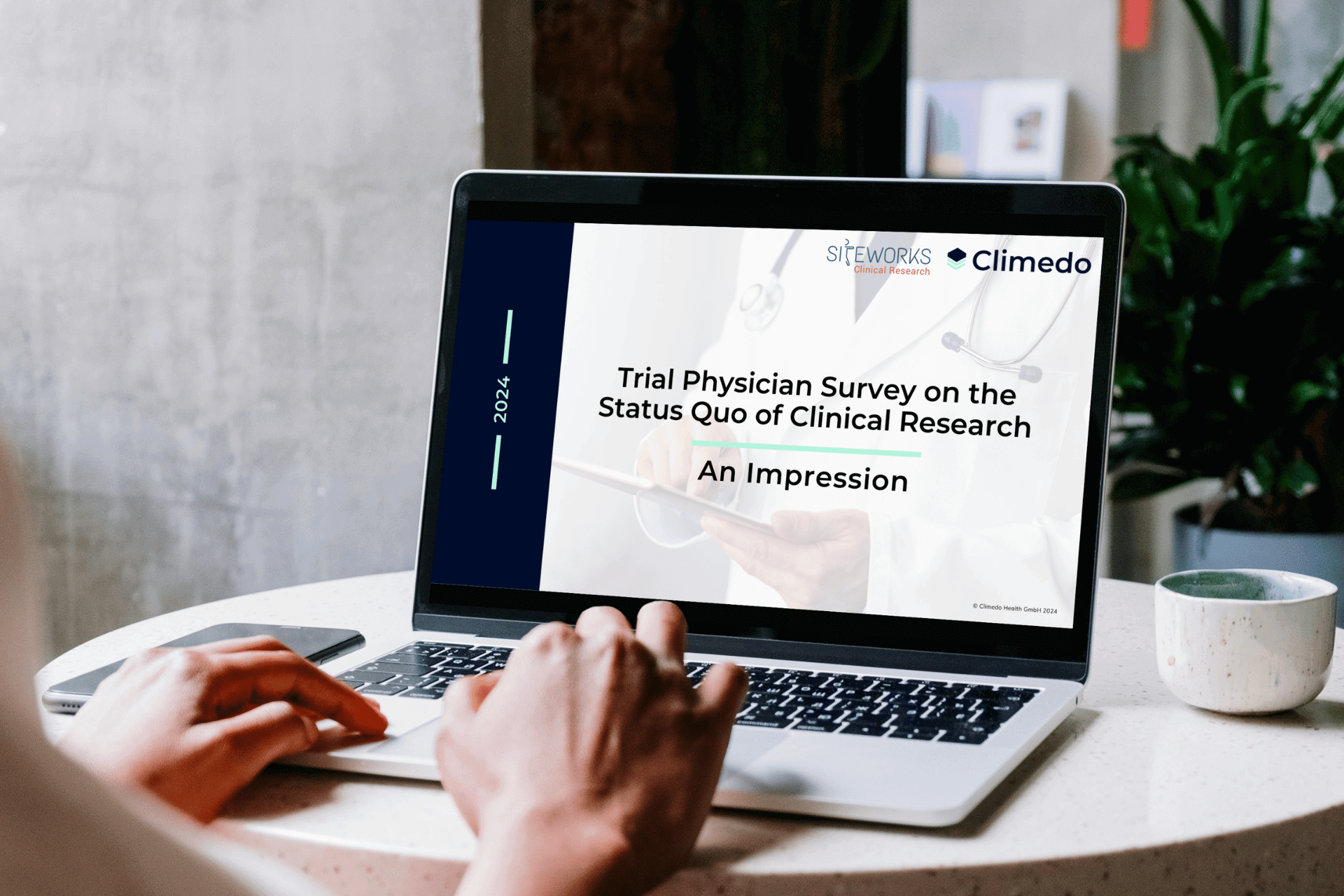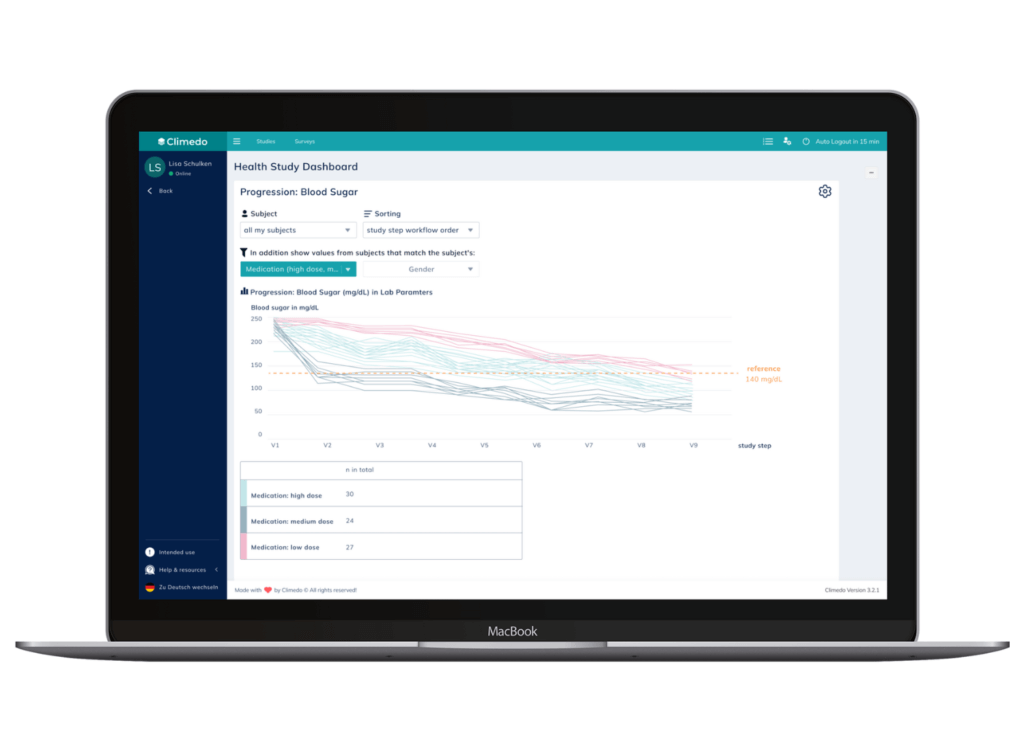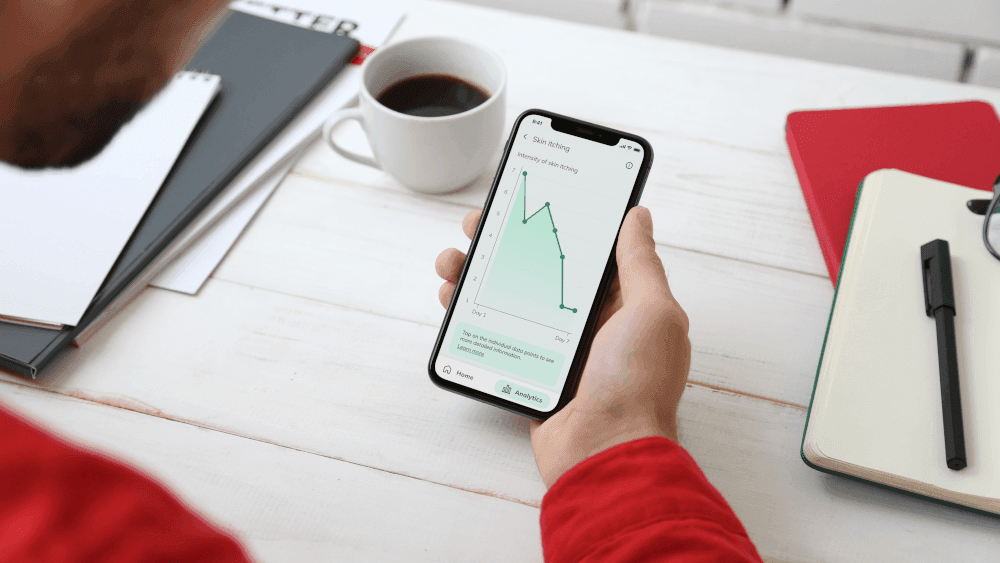Ultimate Guide: Successfully Identifying, Approaching and Engaging KOLs

DATE
January 19, 2024
AUTHOR
Sascha | Co-Founder & CEO
Introduction
Given their position as influential thought leaders in their field, Key Opinion Leaders (KOLs) are highly sought after by pharma companies in the healthcare industry. This position leads to a tightly packed work schedule and means that KOLs have very little time on their hands. As a result, Medical Science Liaison managers (MSLs) – who are trusted scientific advisors to HCPs and must convey truthful medical and scientific information to them – can struggle when trying to reach them and present new medical data from their company.
This blog post will showcase how MSLs can successfully map, approach and engage relevant physicians in their medical field.
1) What is KOL Mapping?
2) How to prioritize a KOL list?
3) How to get 1-1 meetings with KOLs?
4) How to engage KOLs with real-time data insights?
1) What is KOL mapping?
KOL mapping is all about figuring out which KOLs speak with on the and in many cases, about building a KOL list from scratch. In this respect, it’s important for MSLs to know their level of contribution, which is going to differ a lot based on their role, their manager and their team’s history. For example, if they are joining an existing team that’s been around for several years and they’re new, they will likely take on a list of people they’re going to meet with. But if they’re part of a newly formed team, they’ll likely have to help build that list. This can sometimes be done with the support of a vendor
MSLs’ responsibility will vary on a geographic level, too. If they’re an MSL that just covers one city, they need to go deeper into the institution and meet with more than one person. There are also MSLs that cover several regions. Some companies will give their MSLs a list of territories. Some will give them a partial list and ask them to identify new KOLs. Regardless of which bucket the MSL falls in, they need to continue adapting their list over time, as these lists can never be static. There are new physicians coming out of fellowships or emerging as early talents or rising stars all the time. Therefore, it’s key to keep that list relevant and updated on an ongoing basis. For this, MSL must prioritize and figure out who will be on the list, potentially with an ABC ranking. The list will be directly linked to their success metric at the end of the year.
Whitepaper: From Data to Dailogue – Elevating Science-Based Communication in Post-Approval Studies
Our whitepaper shows how to gain an advantage in the post-approval phase. Explore the following topics:
- The challenges in post-approval studies
- How interactive digital tools can help address these challenges
- Real-world use case: Leveraging benchmarking and progression features

2) How to prioritize a KOL list?
To a large extent, an MSL’s success is tied to their KOL list. An MSL will meet with their top 90% of KOLs at least 3-4 times per year. There is a bit of debate between companies that care about quantity versus quality. Some value quality over quantity and worry that if they have quantity metrics, the MSL will focus mainly on quantity rather than quality.
Each company has a different way of ranking their HCPs and KOLs. This could be with a tier 1, 2 and 3 system, or based on region, for example. KOLs are either internationally or regionally influential in their therapeutic area, or institutionally influential in therapeutic decision making. This can help MSLs understand how people are prioritized based on their sphere of influence. But if they’re trying to figure out who really is a KOL, it can be a very subjective term. Some companies will have a set of criteria in advance, e.g. a minimum number of publications or clinical trials they have taken part in. They need to be in a specific therapeutic area, having practiced a certain number of years, or be part of a committee or fellowship program. Typically, KOLs can be considered as physicians who are going above and beyond their essential role; there are certain things that make them additionally respected in their field.
On the other hand, some companies may not work with a given list of criteria and instead ask their MSLs to use their own judgment. In this case, MSLs need to be able to justify why they put down a certain physician as a KOL.
If the MSL and their manager cannot agree about whether to mark someone as a KOL or not, it is important for the MSL to explain their reasoning. Managers are usually open to the MSL’s opinion. The conversation could go like this: “I appreciate your perspective, but these other KOLs have told us that this KOL is or isn’t influential”. Managers have the benefit of speaking with all the KOLs across the country. Typically, it is a 2-way street, with both the manager and the MSL being able to bring their opinion to the table. Some managers may trust their MSLs blindly based on their experience.
It’s important to avoid putting someone down as a KOL just because they were easy to reach or meet with. This happens occasionally in the industry if an MSL is struggling to book meetings with KOLs, or if they simply do not enjoy industry relationships. MSLs may also put people that they’re closest with on the KOL list. That’s where the back and forth comes in. It’s not always easy getting access to new KOLs in the field. MSLs may end up seeing some KOLs more than others because they get along with the staff, for example. But ultimately, they must prioritize and make sure they get appointments with their top tier KOLs.
3) How to get 1-1 meetings with KOLs?
There are several creative ways to go about meeting with KOLs.
Emails tend to be the gold standard in this field because it’s much easier than calling the physicians’ office, having to speak to several different people and then possibly having to wait for a call back. There are several ways to optimize these emails:
- The right subject line: Ideally, this should be something that catches the physicians’ eye, such as the disease area they’re active in, or a meeting date that the MSL is suggesting: “Meeting next Wednesday at 3pm” could be a good start. If no specific time is mentioned, this can unintentionally put additional work on the physician to look at what time they’re available. And as we know, any little inconvenience will instinctually be avoided by humans. MSLs should make it as easy as possible for their KOLs and suggest specific times, or even offer a diary link where the KOL can select a meeting window directly. This saves everyone time.
- A clear introduction: MSLs should make sure that it’s clear that they work on the medical affairs side of the organization, or that they have involvement with research if that’s the case. This should be emphasized in the introduction.
- Less is more: Physicians – and KOLs in particular – have very little time, which is why less is more in this case. Too much information can be overwhelming and will likely lead them to not read the email at all. MSLs should try to convey a little information on what they can help the physician with or offer them. At the same time, it’s advisable not to give them much more than that and keep them guessing a little. If the message is too long, chances are the KOL will never even get to the intended call to action.
One obstacle with emails is that many hospitals or other institutions automatically block emails or send them straight to the junk folder if they have come from outside the organization. Anything that says pharma could easily land in the junk mail and never reach the KOLs.
Phone calls are cumbersome and take a lot more time. MSLs should never ask to speak directly to the physician, but rather with the research coordinator or the office manager. This will get them in the door much more quickly than asking to speak to a specific doctor.
Meetings and conferences are a true Mecca for connecting with KOLs. MSLs get to see all their doctors in one place. After that, they can go straight back to their CRM and input 20 new doctors. Visiting conferences is a great way to meet KOLs who have been previously difficult to reach. At these meetings, MSLs can ask others to help introduce them to a specific KOL. Following the introduction, an opener could be “I admire your work in this field and I would love to have a conversation with you.”
Maximizing one’s network: Finally, an MSL may have a strong relationship with someone at a specific university hospital and know that they know a certain KOL who is of interest. Here, MSLs can ask them if they have any advice on getting in touch with that KOL, such as an introductory email. It’s key for them to use people in their community to help them connect with other physicians.
If every avenue has been explored
It can sometimes be discouraging for new MSLs, especially as they are often high performers. But just because somebody is on their list and is influential in their field, it doesn’t mean that they have to stay there. One valid reason for taking someone off a KOL list is because MSLs cannot gain access to them. Naturally, this doesn’t mean they can’t come back on the list at a later point in time. If the MSL has really tried everything (e.g. emails, phone calls) for six months and nothing has worked, they should try to speak to their manager about taking that KOL off their list, at least for now.
In a nutshell, success in the field comes down to being bold and putting oneself out there. Physicians will never reach out to MSLs, so MSLs are the only ones who can make that appointment happen. Conversely, it is necessary to have patience. There are many learnings on the way to becoming a successful MSL. The learnings didn’t come overnight, but from staying persistent, going to every single regional meeting as well as international ones, sending follow-ups and offering advisory boards or research opportunities. Building relationships takes time and it can also be helpful to speak with more experienced MSLs int the field and seek their advice.
Trial Physician Survey on the Status Quo of Clinical Research
Our survey results show trial physicans’ perspectives on clinical trials and the current state of clinical research. Learn more about:
- Motivation and challenges to study participation for investigators
- Expectations of study sponsors and CROs
- Respondents’ openness towards digital technologies in studies

4) How to engage KOLs with real-time data insights?
The KOL meeting is all about presenting new data related to a specific disease area to physicians. To make this dialogue as interactive and insightful as possible, MSLs can work with real-time dashboards that show clinical study progress in realtime, such as those offered by Climedo’s Benchmarking and Progression features.
Real-time, interactive dashboards are crucial for taking KOL engagement to the next level in clinical trials. They offer access to valuable data, personalized insights and visual representations. This supports KOLs in staying informed about a study’s progress, making better decisions and effectively conveying data to HCPs in their team.
These dashboards streamline data analysis and allow for quick filtering (e.g. by specific regions or age groups) and thereby access to specific patient groups and their real-world response to a treatment. Given that the KOL will usually be interested in a specific patient subgroup, this kind of personalized data will be highly valuable to them.
Additionally, these dashboards support collaboration and communication among KOLs and other stakeholders, promoting knowledge sharing. KOLs can track their own contributions and impact through interactive dashboards, encouraging continuous improvement.
Climedo’s Benchmarking feature enables KOLs to compare a defined data point of a subject to the overall study population. MSLs can also leverage these tools to inform new KOLs about the study and potentially recruit them, bearing in mind that this early data is not yet representative.
In the visual below, study data can be filtered by the patient’s body weight and BMI. The treating KOL can select a specific patient and highlight their positioning within the histogram, relative to a certain (sub)population. Here, data is compared for a given visit (or “study step”), e.g. data from the 3rd visit. As a result, the treatment duration is comparable among the displayed patients. All of this is anonymous, of course.

Climedo’s Progression feature, on the other hand, enables KOLs to view the trajectory of a patient’s selected parameter, captured over a specific specific time period (e.g. multiple visits).

If you want to learn more about Climedo’s interactive dashboards for real-time data insights, feel free to book a non-binding call with our team!
Conclusion
In the fast-paced pharma landscape, MSLs face the challenge of engaging influential KOLs amidst their demanding schedules. This article has underscored the critical steps involved in successful KOL engagement, from meticulous mapping and strategic prioritization to innovative outreach methods. Recognizing the significance of real-time data insights, particularly through interactive dashboards, is becoming a pivotal tool for elevating KOL interactions. As the industry continues to evolve, MSLs must navigate these strategies adeptly, fostering meaningful connections with KOLs to advance collaborative efforts and shape the future of healthcare. Get in touch with Climedo to learn more about how we can support your company!






